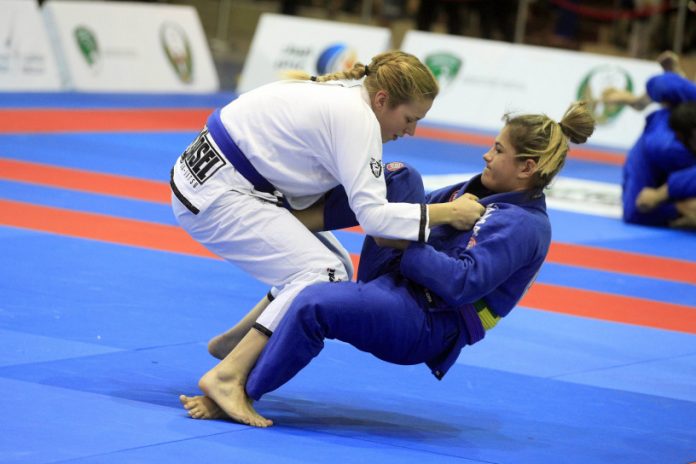
So now that the craziness around the IBJJF worlds has settled, it’s time to think about the upcoming competition season. The next round of worlds is a year removed, so you have the time to get a foolproof game plan ready. While there are many aspects to a competition gameplan, the technical aspect is, of course, the most important. So before we even think about conditioning, mental toughness, and strategy, let’s discuss Jiu-Jitsu techniques.
Whenever you’re preparing for competition, you need to be able to grasp the bigger picture. That means that getting ready for competition should have you looking at all possible aspects of the game. The Jiu-Jitsu techniques you choose to center your plan around cannot be the only ones in your arsenal. At a beginner level (senior white belt / early blue belt) you need to learn how to widen your technical horizon. it’s time to think about connections and having an ace for every usual position, good or bad.
That said, a solid gameplan consists of much more than Jiu-Jitsu techniques. However, without them, there’s no plan. The most important thing to consider in building a gameplan is the balance. Too few techniques and you’ll end up short at a certain point. Too many Jiu-Jitsu techniques and you’ll be overwhelmed and end up overthinking things. When you’re working on a technical gameplan for competition, simplicity and drilling are your two best friends. Today, we’re going to lay out the basic structure of a solid gameplan for any blue belt out there looking to compete. Once again, this is only the most basic part of a gameplan, with upcoming articles aiming to focus on mindset, nutrition, and conditioning.
The Concept Of Comfort And Discomfort
To begin with, you need to understand one very important premise. You need to know how to act in every given situation during a match! There’s no way around it! What this means is that you need to have at least one move that you know, have drilled and are comfortable with from everywhere. Skipping takedown training just because you aim to pull guard might end up with you flying through the air against your will. Do not assume that you’re good enough to brush away an opponent’s game simply by going for what you like.
This is where the concept of comfort and discomfort comes into play. The broad notion behind the concept is that you need to turn discomfort into comfort for your self, and the other way around for your opponent. For example, ending up mounted shouldn’t have you panicking like a drowning man. Instead, you should be calm, breathe and have the correct Jiu-Jitsu techniques ready to get you out. This translates to being comfortable in a potentially uncomfortable position. It’s not that your opponent can’t make you miserable. it is about knowing you can escape and doing it despite their best efforts.
Your overall knowledge of the game (or apparent knowledge) should turn even the most comfortable positions of your opponent into uncomfortable ones. This is going to suck away their confidence, leaving you with a clear path to go for your favorite Jiu-Jitsu techniques.
Systematization Of Jiu-Jitsu Techniques For Competition
If you’re at a blue belt level, or close to it, you most likely have competition experience. So, you know that forcing single moves doesn’t go down well on the mats. Even when rolling, forcing things makes you tense and easy to defend against. That means that you should always look to combine your best Jiutechniqueschniqes with other relatable moves.
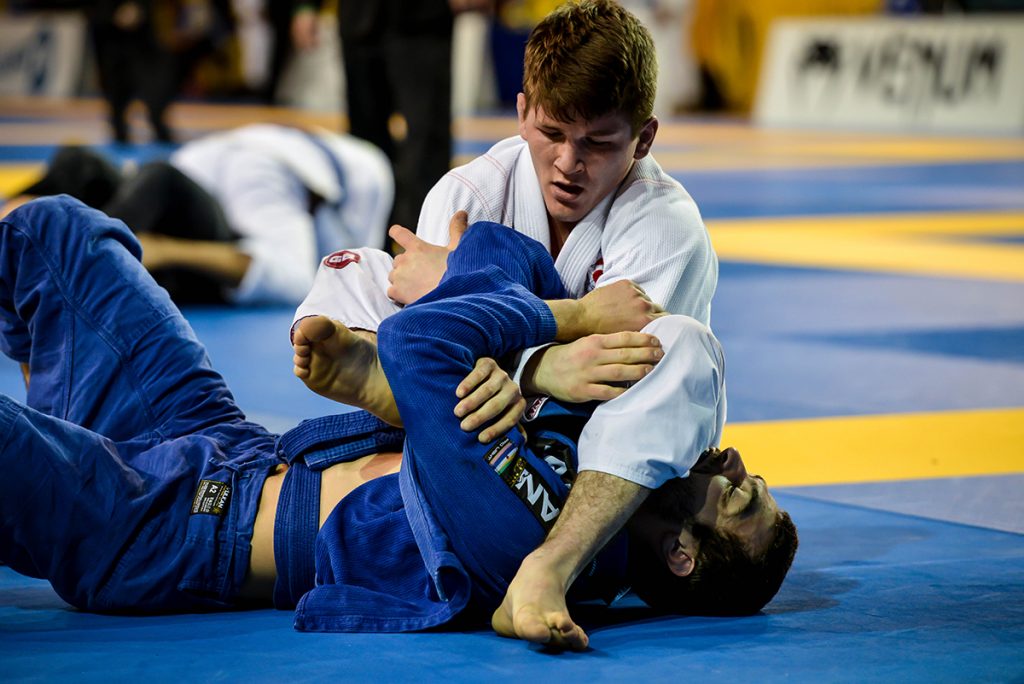
Apart from forcing moves, you need to make sure you’\re not rushing them as well. Looking for an armbar straight off a scissor sweep is going to get you in a scramble. You’re much better off establishing mount and looking for a collar choke before thinking about an armbar. Yes, even if you’re not good at collar chokes, you need to at least use them as a threat to set up what you really like.
So, in terms of systematization, we’re going to divide Jiu-Jitsu techniques into three distinct categories, each with three subcategories of its own. Within those categories are moves and techniques that easily connect to each other, resulting in an easy to execute, complete gameplan.
The Defensive Game
Staying safe is a priority in BJJ. Attacking is always the preferred course of action, of course, but without defense, you have nothing to fall back to. Al lit takes is an eager and faster opponent and you’ll be forced into discomfort. Instead, make sure you know how to defend and escape every bad position in BJJ. Contrary to popular belief among beginners, this is the aspect of your game you really need to learn for competition. Conversely, here are the best Jiu-Jitsu techniques to help you feel comfortable when defending.
Standing
Every BJJ match starts standing. Even if you absolutely hate takedowns, you need to know how to stay on your feet long enough to pull guard properly. For that, you’ll need to get comfortable in two major aspects of grappling: Judo and wrestling. Now, since both of those are complex grappling martial arts of their own, you just need to know how to stay safe until you get what you want.
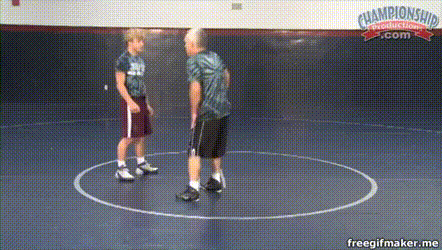
Against a Judoka, expect an iron gripping rapper that stands tall and upright in front of you. The thing with Judo is that attacks are most likely to come in form of hip throws or foot sweeps. That said since both have different mechanics and countering is quite complex and requires judo experience, you need to cut them at their root. Your best defense against a Judo player is grip breaks. Yes, their grips are strong but with proper technique, you can restrict the opponent from establishing them. When you drill Jiu-Jitsu techniques, spend time braking Gi grips. It’ll be worth it!
Staying On Top
Although the top position is seen as a dominant one in grappling martial arts, BJJ is a very different story. Namely, open guard players are very dangerous, having attacks lurking where you least expect them. Having top position is going to do nothing for you if you get swept or submitted. So, staying on your feet long enough to make sure you can be dominant is key.

Finally, in terms of specific Jiu-Jitsu techniques, you’ll need to have your submission defenses ready. Armbars, triangles, and Omoplatas are the most usual suspects although you need to work on collar chokes and guillotine defense as well. One of each should suffice but remember to always connect an escape or counter with a transition to a better position. Making techniques chains is key to a solid competition gameplan.
Bottom Escapes
When on the bottom in BJJ, unless you’re in a guard variation, you’re most likely in trouble, Whether it is side control, mount or back control, you’re going to have to fight your way out before thinking about anything else. So, make sure you do not dread these position and instead train regularly how to escape and counter them.
Your best bet to escape any given position is to have at least one solid escape. Although it is preferable to have two different ways out, one will suffice if you drill enough. Let’s say you’re stuck in bottom side control. The best way out is the simplest – bridge and shrimp. However, you need to be able to use this escape against any and all side control variations, which is often impossible. Until you think about frames. When drilling the basic side control escapes make sure you start with building frames. This is going to improve your escapes and it also translates to escaping other positions, like the mount.
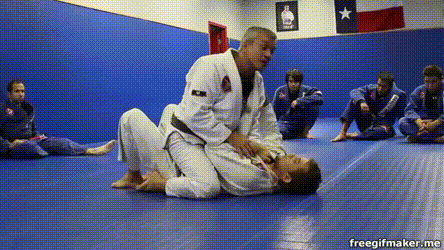
The back is the worst position to get out of, and you need to make sure you have at least one escape down. No matter which escape, remember to always make sure you grip fight to stop the choke from being set up. Only then can you think about escaping the hooks and the whole position.
Transitional Jiu-Jitsu Techniques
Under transitional Jiu-Jitsu techniques, we don’t just mean moving between dominant positions. Sweeps and guard passes are also transitional moves rather than attacking ones. In those terms, the three categories of transitional Jiu-Jitsu techniques include sweeping, passing as well as your usual inter-positional transitions.
Sweeping Jiu-Jitsu Techniques
With sweeps it is easy. MoOst sweeps depend on the guard you’re playing so you’re already probably adept at sweeping from there. generally, when sweeps are in question, you need to beardy to sweep from two major positions, no matter how little time you spend in them. Those are the closed and the half guard.
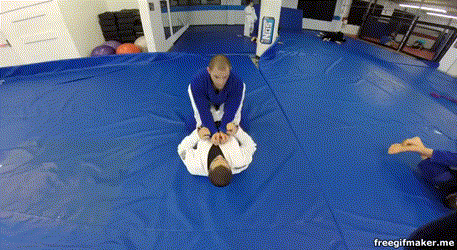
Form the half guard, there’s nothing that can beat the regular underhook sweep. First, it keeps you in a perfect position to be safe in the half guard, as you have to be on your side. Next, it keeps you close to your opponent, so they can’t launch an attack. And finally, sweeping is as easy as trapping their free leg with your arm. Learn, it drills it and uses it!
The Passing Gameplan
In terms of passing the guard, once again you need to know which Jiu-Jitsu techniques apply to a given situation. You can’t hope to use a standing pass against half or an open guard, so you’ll need variety in your passes.
Against the closed guard, I think that standing passing is the best bet, especially at beginner level. You can opt for passing from the knees as well, but standing is easier to drill land execute. Make sure you can do it in your sleep so that nobody can bother you from the closed guard.
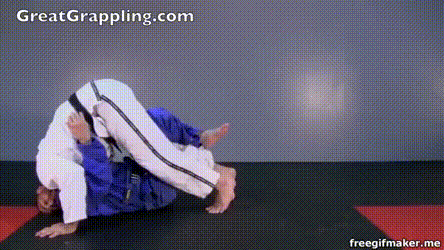
Finally, the most complex types of passes are against the open guard. Since there are some any open guard variations, you need to make sure you have a couple of passing systems that cover most. Your best bet is to have a pressure pass (knee slice or over-under, for example) and a circular pass (torreando or leg drag) in your arsenal. Choose your favorite and learn it good. You’ll discover which to use when in rolling and in conversation with your instructor.
Or, you could pick up Craig Jones’ latest DVD series “How To Pass Guards Quickly And Easily”. It is going to provide you with all the essential guard passing Jiu-Jitsu techniques for competition.
Positional Transitions
Positional transitions do not require a lot of explanation. You already know that in BJJ, you need to be in a correct position in order to make sure you can control and/or finish an opponent. This means progressing through the hierarchy of position until you reach your favorite.
To that extent, you’ll need to know what to do once you pass, sweep or escape a position. When in side control, you have the option of going to mount or back control. Make sure you have a way to both so that you cover every direction your opponent goes to. IN terms of the mount and back, these positions are interchangeable between themselves, although back control is preferred. WWhen in mount it is not hard to transition to the back. The same goes for back control, although going to mount should only be an option when an opponent is close to an escape.
The goal is to never allow an opponent to return you from mount to side control, or further back like half or full guard. Once you get a position you need to know how to stay there or transition towards your favorite one.
Attacking Jiu-Jitsu Gameplan
Finally, we arrive at the cherry. This should be the last part of your gameplan, despite common practice. Yes, submissions are fun but they’re also really hard to get in the competition. So, when you prepare your gameplan, make sure you have all your defensive and transitional Jiu-Jitsu techniques ready before you move on to attacks. In terms of attacking, submissions are the obvious focus, although taking an opponent down is also a part of this category.
Essential Takedown Skills
In terms of takedowns, we already covered the defensive aspect. If guard pulling is your forte than by all means, practice it as an attack. after all, it is a great way to take the fight to the ground, which is the essence of a takedown.
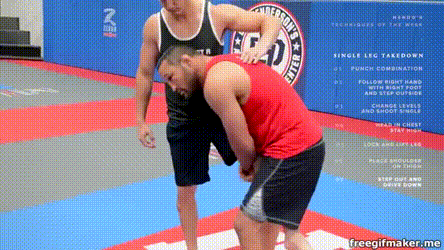
Top Position Attacks
First and foremost, let’s make one thing clear. Attacking from top positions means attacking from either top side-control, mount or the back. Half guard is also an option but you’re better off passing before you attack.
From side control, your best bet is to attack with moves that don’t require a lot of movement. The paper cutter choke, baseball choke and bent armlocks (Kimura / Americana) are your best bet. That said if you prefer to go for an armbar, by all means, drill the move and go for it! Remember that you can also always transition to the back or mount as well!
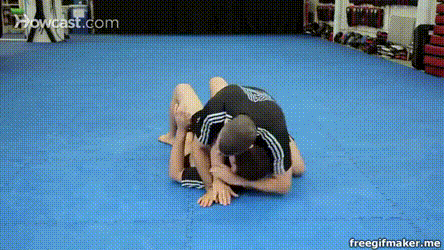
Bottom Attacks

These moves are the high percentage at every level of Jiu-Jitsu. they also tie together perfectly in a system and are easily accessible from plenty of guard variation. These are the holy trinity of submissions and you should drill them every time you train!
However, it is always prudent to have a few surprises down your sleeve. To that extent, pick up Danaher’s leg lock DVD and throw in a few butterfly guard leg lock attacks as well. While you’re looking to keep things interesting, spend some time experimenting with the Kimura as well. It can be a very powerful submission as well as a gateway for sweeping. And finally, make sure you at least know that the Guillotine choke exists as a weapon from the guard. turn to Lachal Giles and his “High Percentage Chokes” DVD series for detailed advice.
Source Videos: Mount escape, Pendulum sweep, Half Guard Pass, Single Leg, Triangle Armbar, Sweep Counter, Sprawl
Related Articles:
BJJ Blue Belt Requirements, Struggles, And Expectations
Simple Side Control Escape Concepts You Must Know
Roll Tired To Perfect Your Jiu-Jitsu Techniques
5 Steps To Fix Your BJJ Game Weak Spots
Turtle up! A Quick Guide To The Forgotten Turtle Guard


![Darce Choke Encyclopedia – Origins, Mechanics and Variations [2025] BJJ, choke, Brabo, BJJ Darce Choke, D'arce Choke, Darce BJJ Choke](https://bjj-world.com/wp-content/uploads/2017/11/JungPoirierLeeYahoo-218x150.jpg)









![Get Off My Legs Gringo Craig Jones DVD Review [2025] Get Off My Legs Gringo Craig Jones DVD Review](https://bjj-world.com/wp-content/uploads/2025/03/get-off-my-legs-gringo-craig-jones-dvd-review-218x150.png)

![Leg Lock Entries Helena Crevar DVD Review [2025] Leg Lock Entries Helena Crevar DVD Review](https://bjj-world.com/wp-content/uploads/2025/03/leg-lock-entries-helena-crevar-dvd-review-218x150.png)
![Special K Guard Neil Melanson DVD Review [2025] Special K Guard Neil Melanson DVD Review](https://bjj-world.com/wp-content/uploads/2025/03/special-k-guard-neil-melanson-dvd-review-218x150.png)
![Arm Bar It All Shawn Melanson DVD Review [2025] Arm Bar It All Shawn Melanson DVD Review](https://bjj-world.com/wp-content/uploads/2025/03/arm-bar-it-all-shawn-melanson-dvd-review-218x150.png)

![Closed Guard Reintroduced Adam Wardzinski DVD Review [2025] Closed Guard Reintroduced Adam Wardzinski DVD Review](https://bjj-world.com/wp-content/uploads/2025/01/closed-guard-reintroduced-adam-wardzinski-dvd-review-324x235.png)

![Back Control and Submission Felipe Pena DVD Reveiw [2025] Back Control and Submission Felipe Pena DVD Reveiw](https://bjj-world.com/wp-content/uploads/2025/01/back-control-and-submission-felipe-pena-dvd-reveiw-100x70.png)



![Mastering The Crucifix Alexandre Pereira DVD Review [2025] Mastering The Crucifix Alexandre Pereira DVD Review](https://bjj-world.com/wp-content/uploads/2025/01/mastering-the-crucifix-alexandre-pereira-dvd-review-100x70.png)

![Advantage Over Time Outside Passing Jozef Chen DVD Review [2025] Advantage Over Time Outside Passing Jozef Chen DVD Review](https://bjj-world.com/wp-content/uploads/2025/03/outside-passing-jozef-chen-dvd-review-100x70.png)
![Compass Kneebar System Charles Harriott DVD Review [2024] Compass Kneebar System Charles Harriott DVD Review](https://bjj-world.com/wp-content/uploads/2024/11/compass-kneebar-system-charles-harriott-dvd-review-100x70.png)
![Basic Closed Guard Jasmine Rocha DVD Review [2024] Basic Closed Guard Jasmine Rocha DVD Review](https://bjj-world.com/wp-content/uploads/2024/11/basic-closed-guard-jasmine-rocha-dvd-review-100x70.png)
![Jeff Glover Deep Half Revolution DVD Bundle Review [2024] Jeff Glover Deep Half Revolution DVD Bundle Review](https://bjj-world.com/wp-content/uploads/2024/10/jeff-glover-deep-half-revolution-dvd-bundle-review-100x70.png)



![Edging Yourself Out Of Danger Craig Jones DVD Review [2024] Edging Yourself Out Of Danger Craig Jones DVD Review](https://bjj-world.com/wp-content/uploads/2024/12/edging-yourself-out-of-danger-craig-jones-dvd-review-100x70.png)

![Essential Shin To Shin System Shawn Williams DVD Review [2025] Essential Shin To Shin System Shawn Williams DVD Review](https://bjj-world.com/wp-content/uploads/2025/01/shin-to-shin-system-shawn-williams-dvd-review-100x70.png)


![Baseball Chokes From Everywhere Magid Hage DVD Review [2025] Baseball Chokes From Everywhere Magid Hage DVD Review](https://bjj-world.com/wp-content/uploads/2025/01/baseball-chokes-from-everywhere-magid-hage-dvd-review-100x70.png)

![Front Head Lock Kaynan Duarte DVD Review [2025] Front Head Lock Kaynan Duarte DVD Review](https://bjj-world.com/wp-content/uploads/2025/02/front-head-lock-kaynan-duarte-dvd-review-100x70.png)

![No-Gi Defense Xande Ribeiro DVD Review [2024] No-Gi Defense Xande Ribeiro DVD Review](https://bjj-world.com/wp-content/uploads/2024/11/no-gi-defense-xande-ribeiro-dvd-review-100x70.png)


![Neil Melanson DVD Bundle Review: Filthy Brutal No Good Attacks [2024] Neil Melanson DVD Bundle Review: Filthy Brutal No Good Attacks](https://bjj-world.com/wp-content/uploads/2024/10/neil-melanson-dvd-bundle-review-filthy-attacks-100x70.png)
![Collar Sleeve Guard Mikey Musumeci DVD Review [2024] Collar Sleeve Guard Mikey Musumeci DVD Review](https://bjj-world.com/wp-content/uploads/2024/12/collar-sleeve-guard-mikey-musumeci-dvd-review-100x70.png)